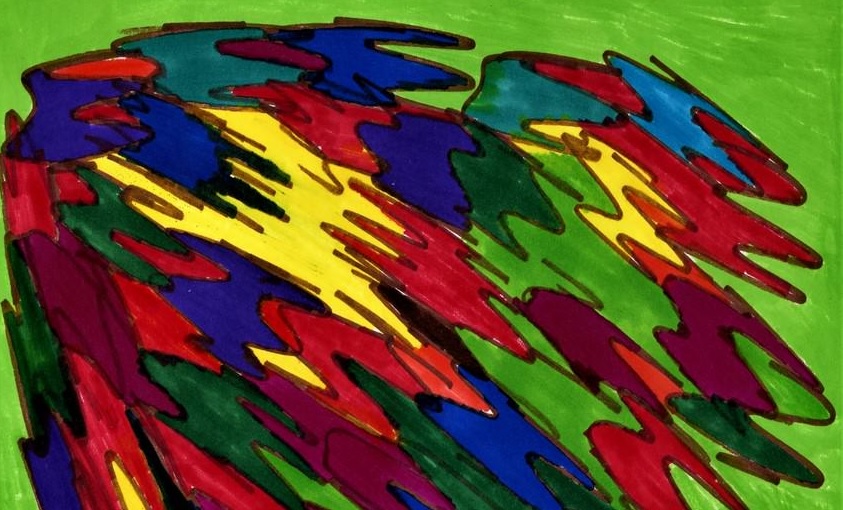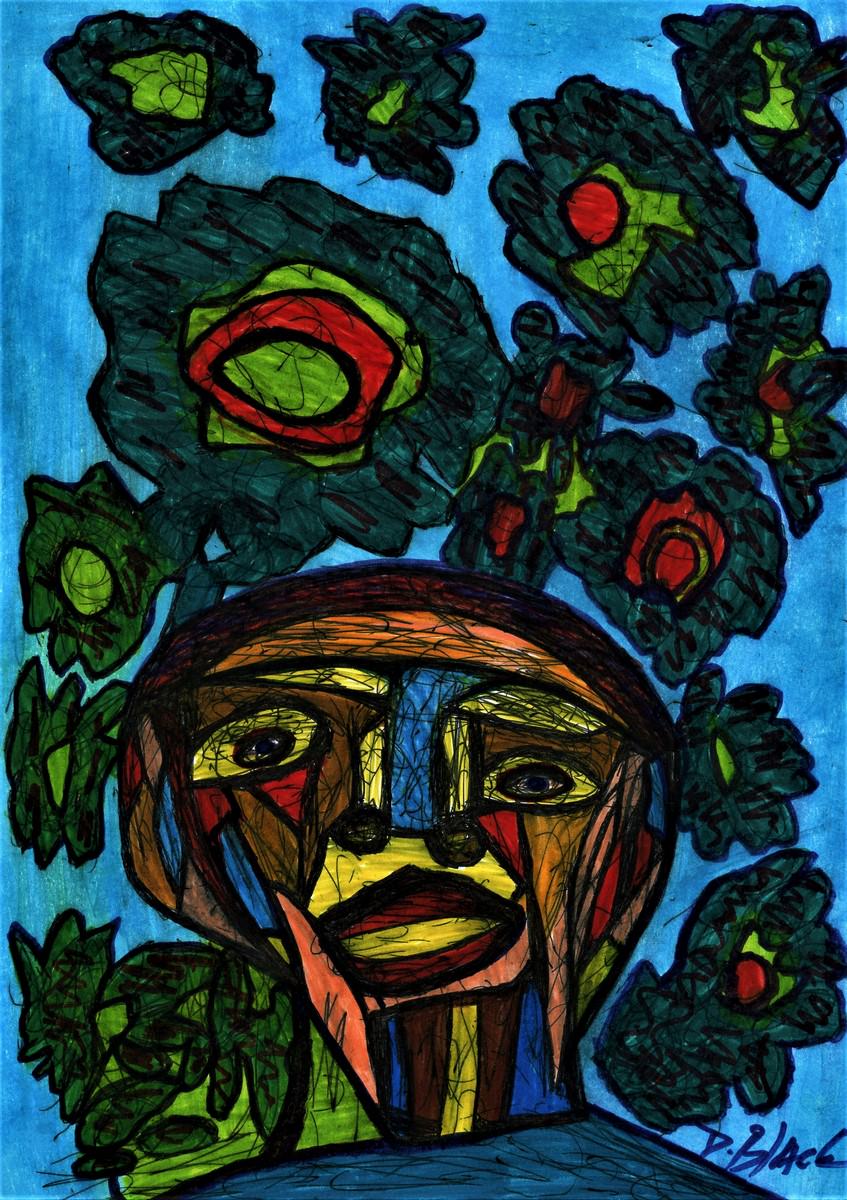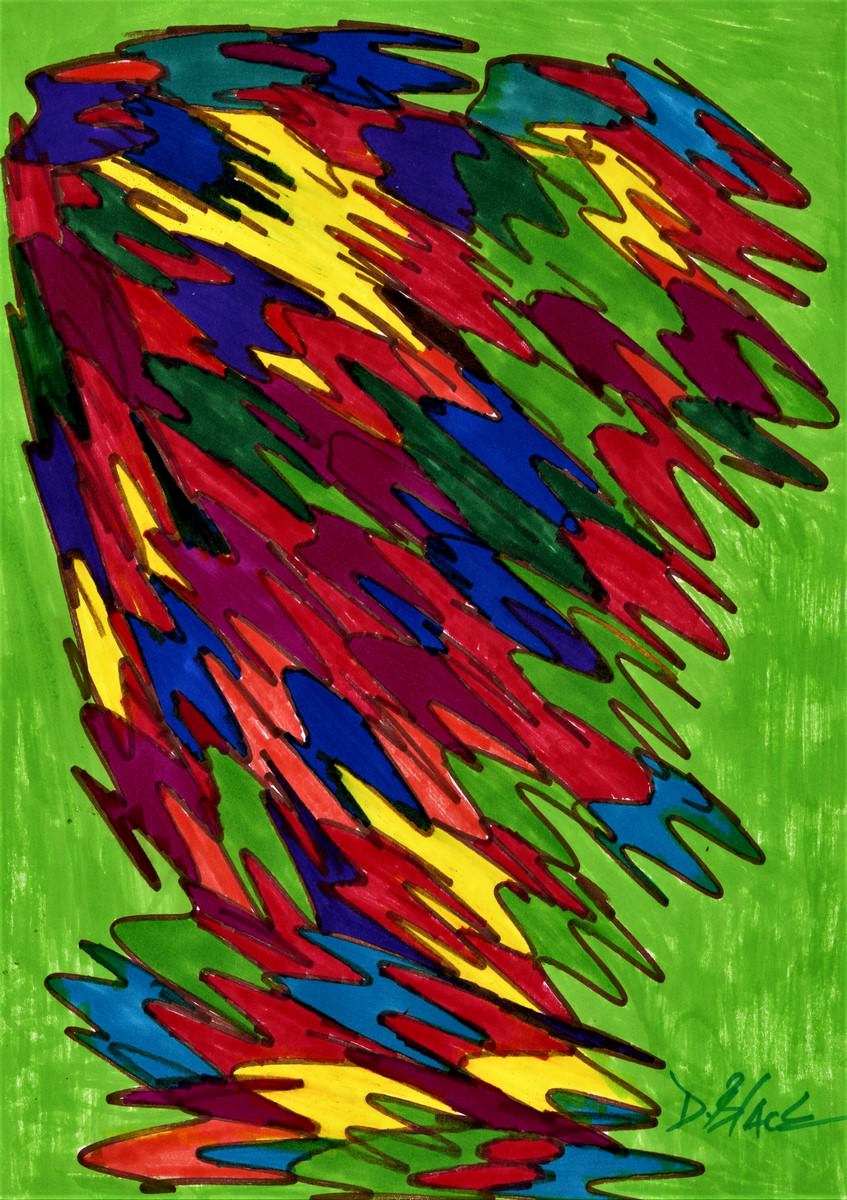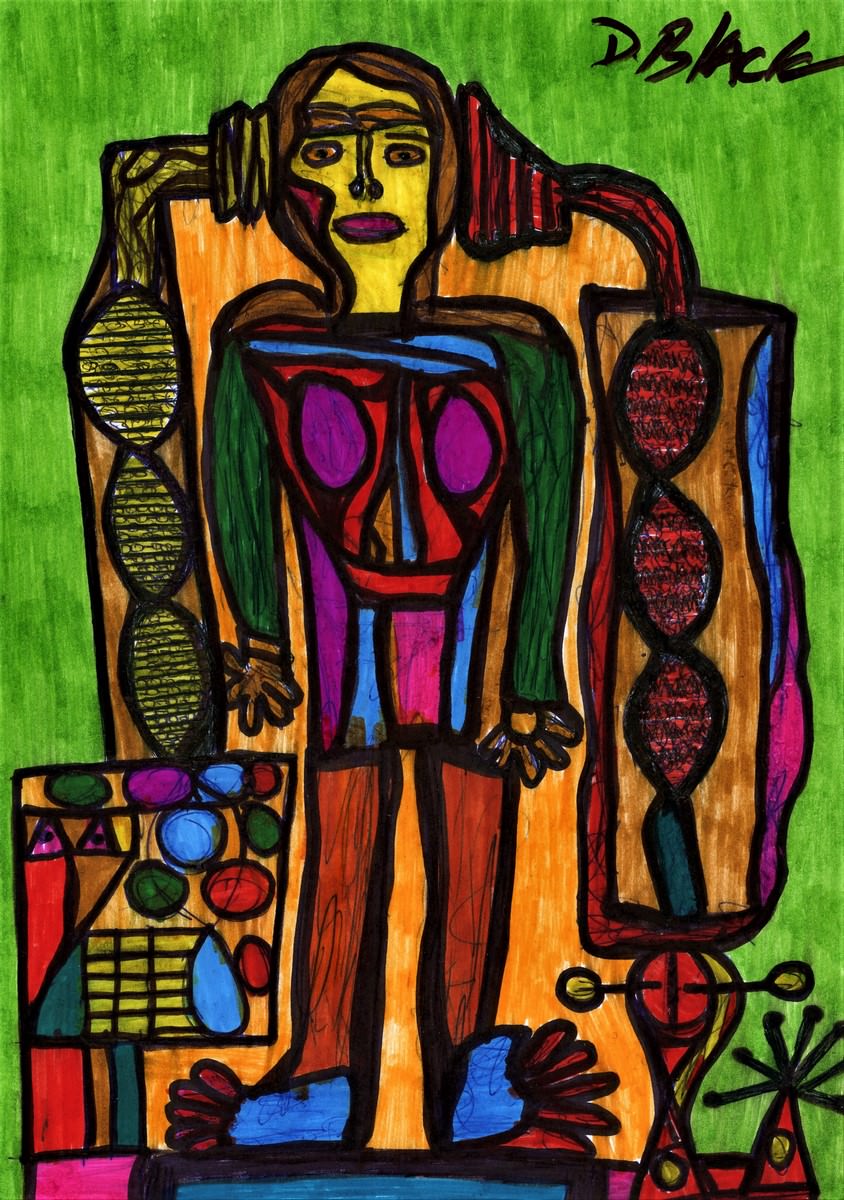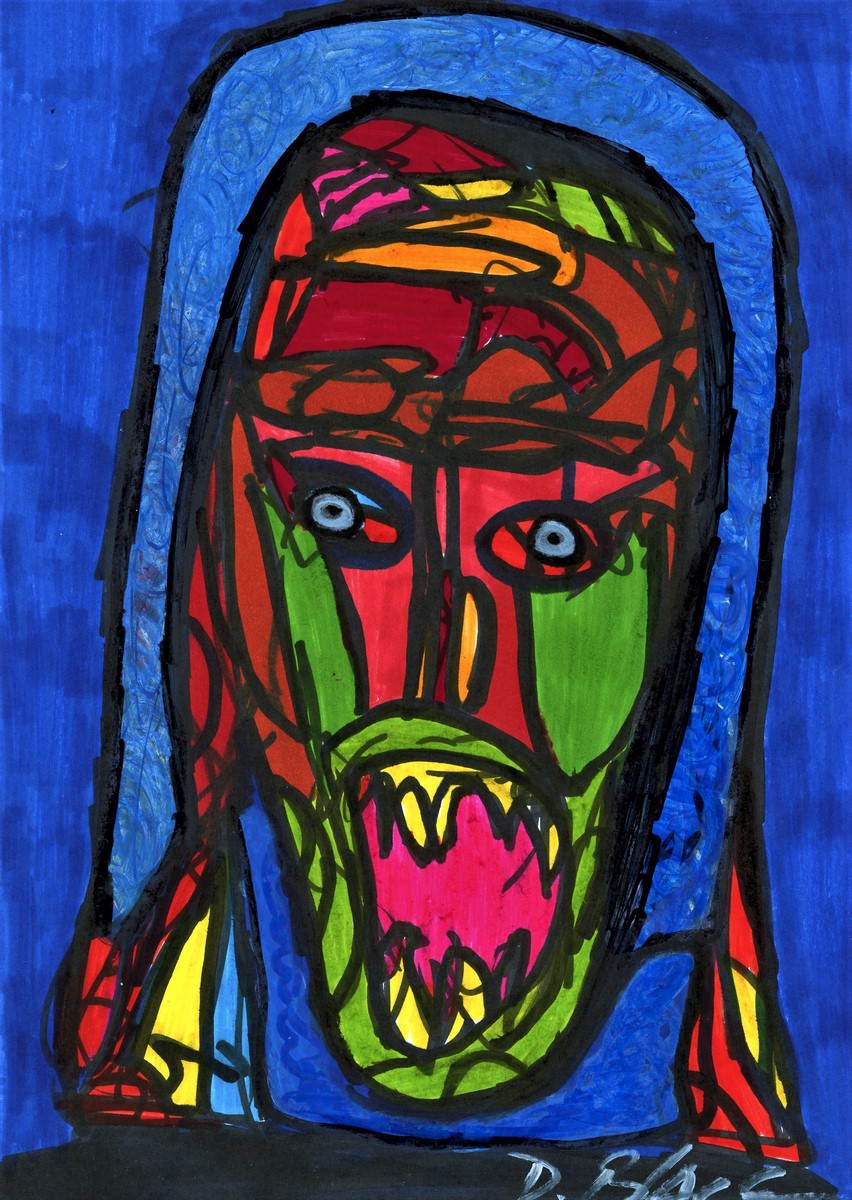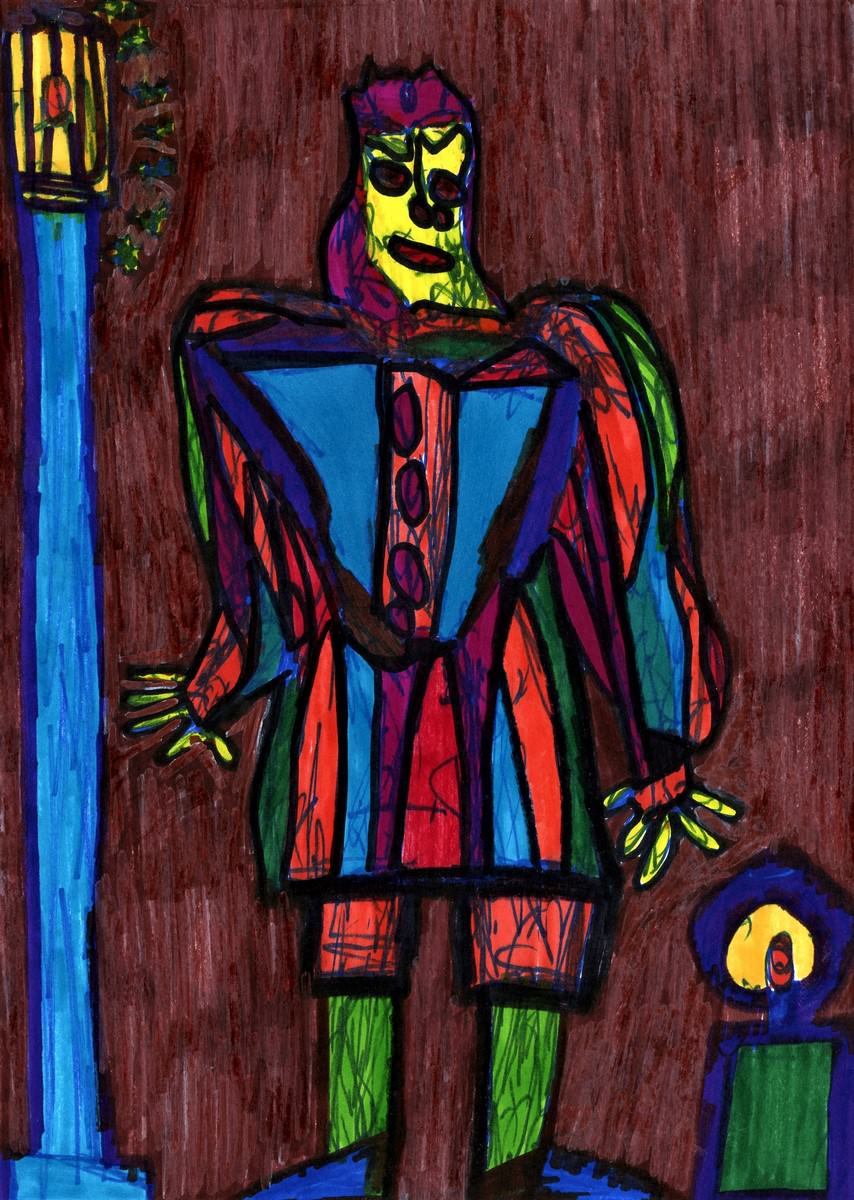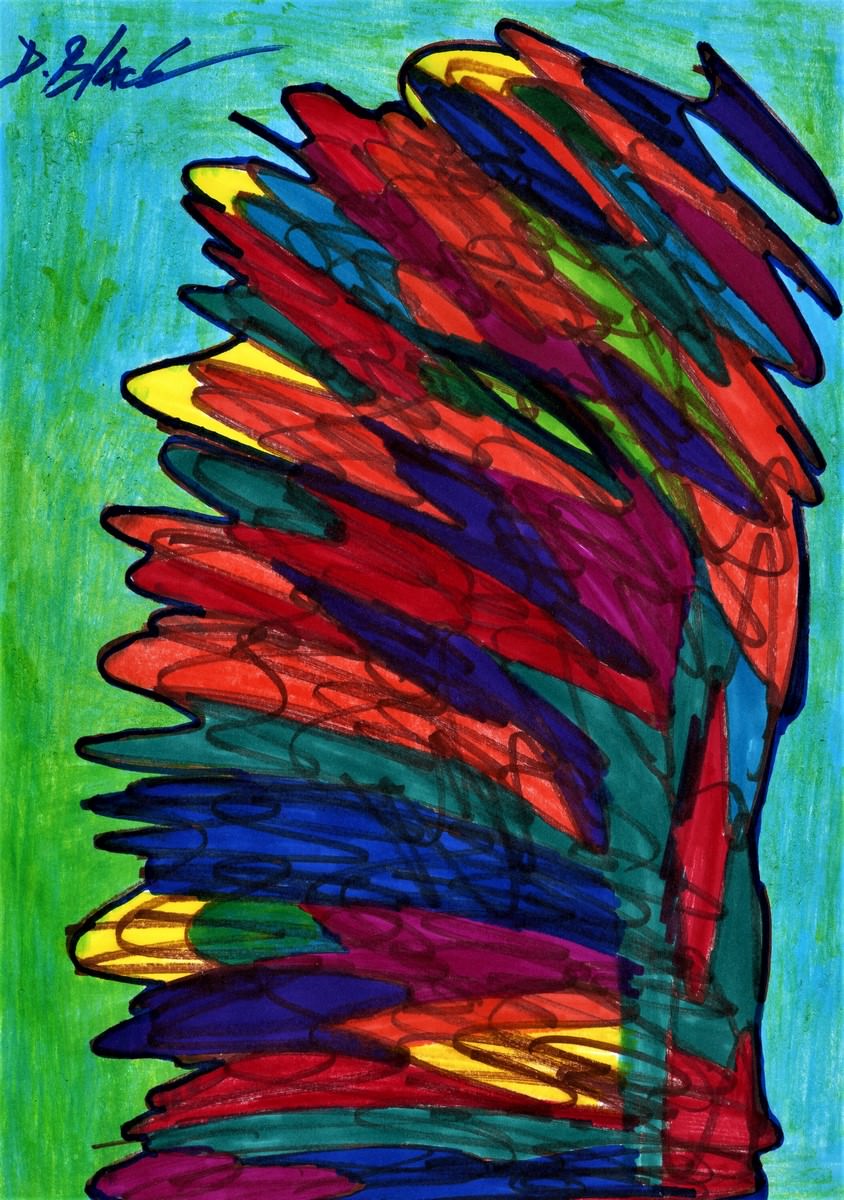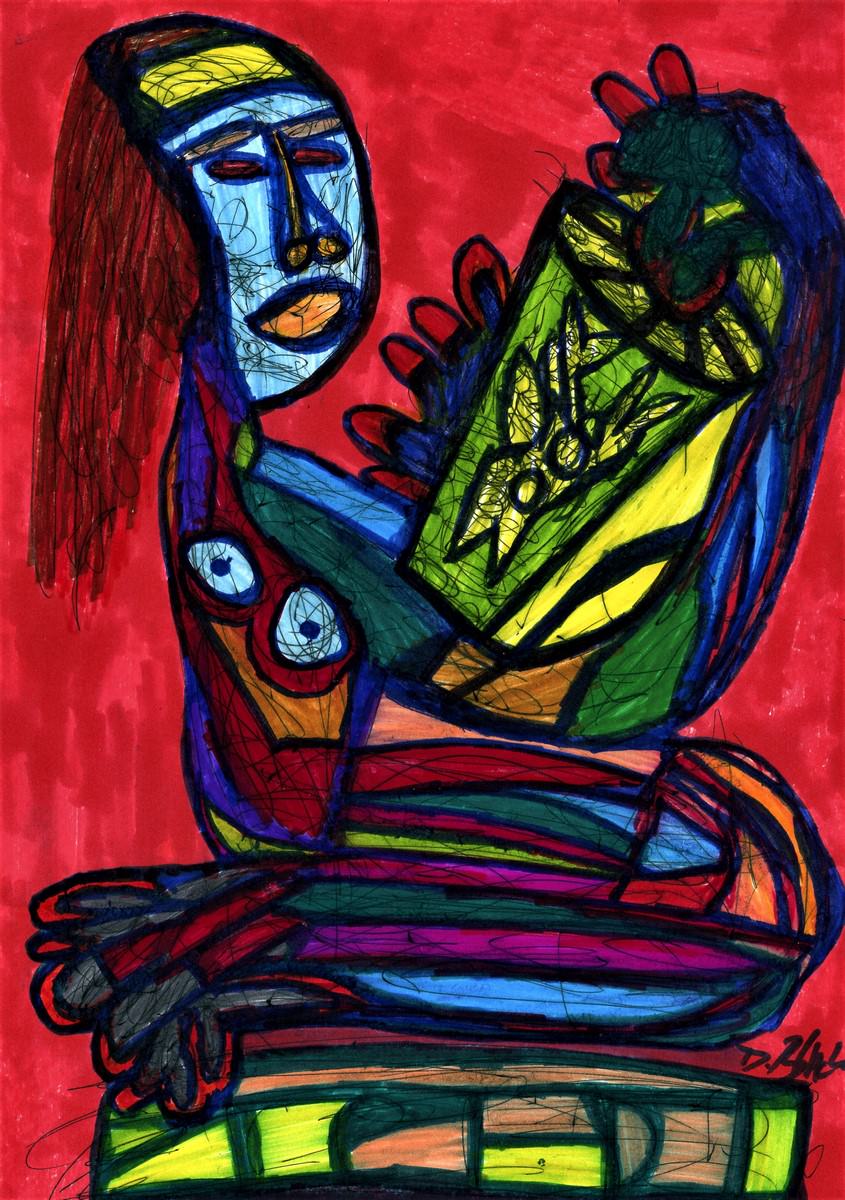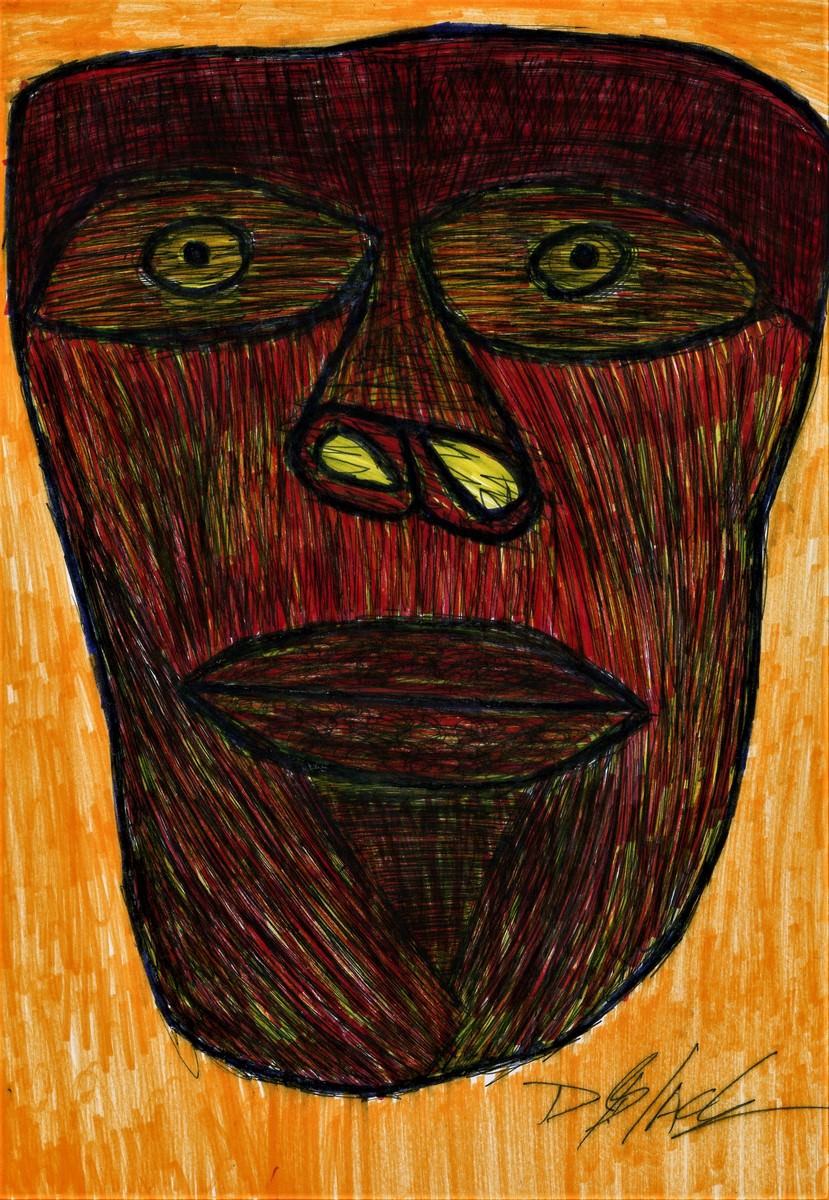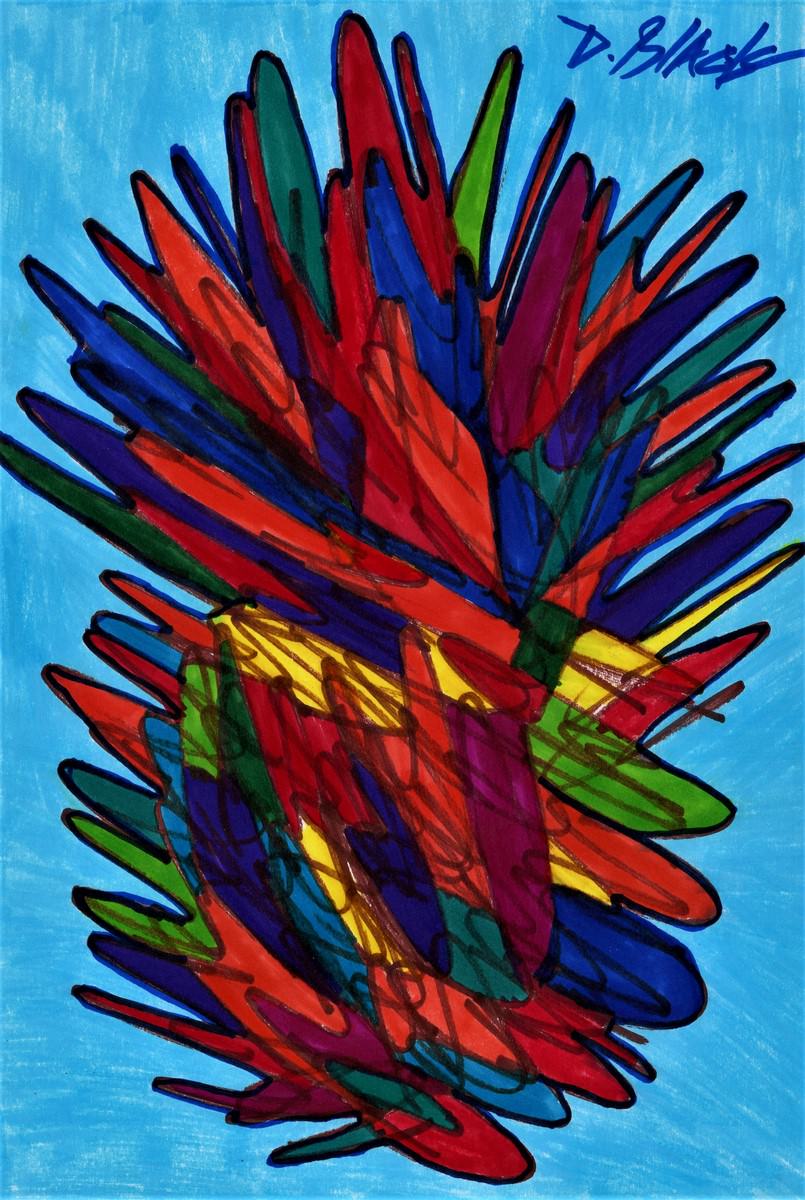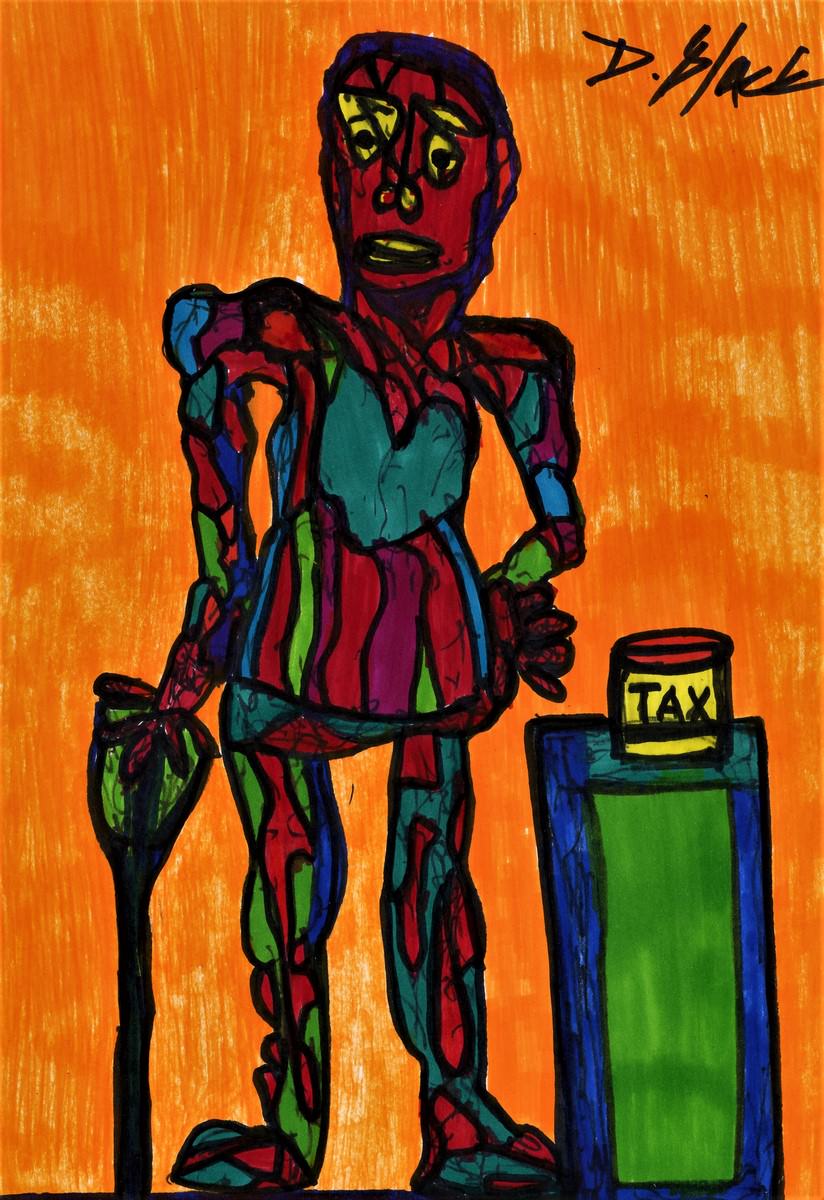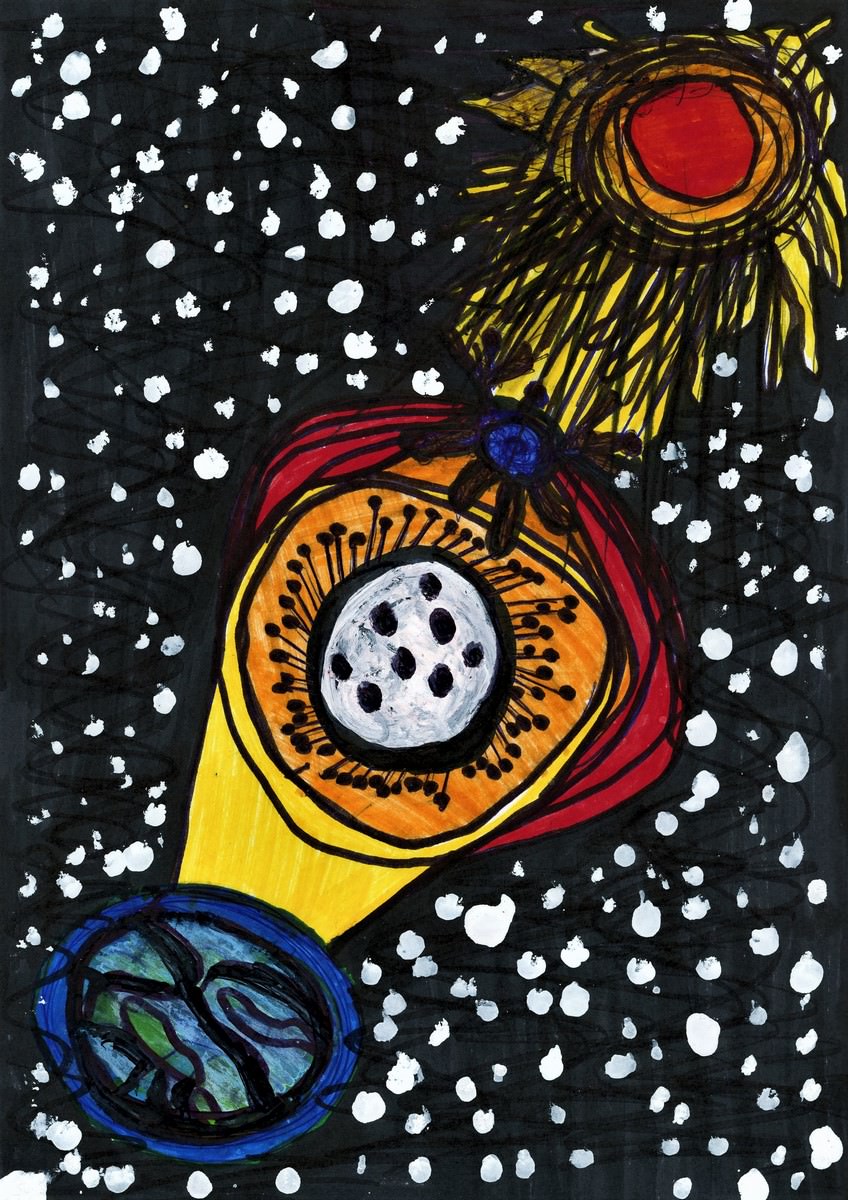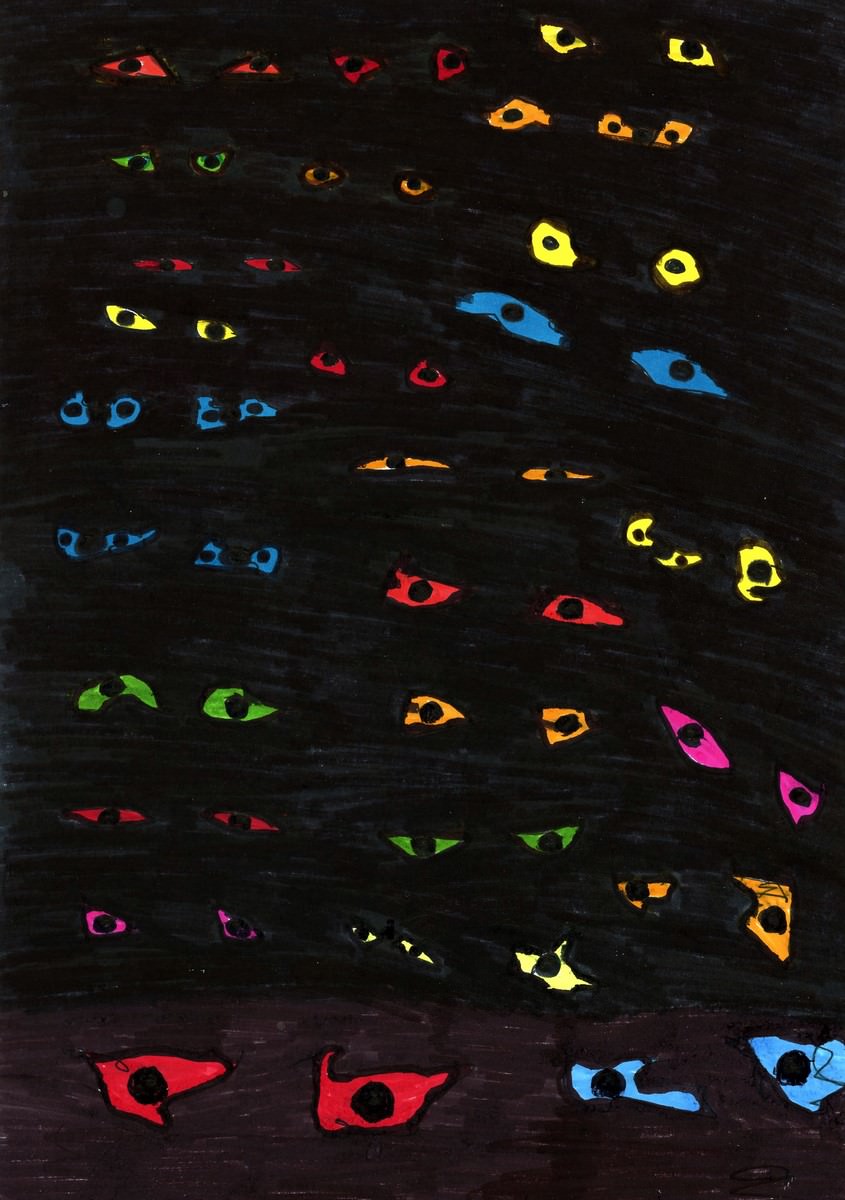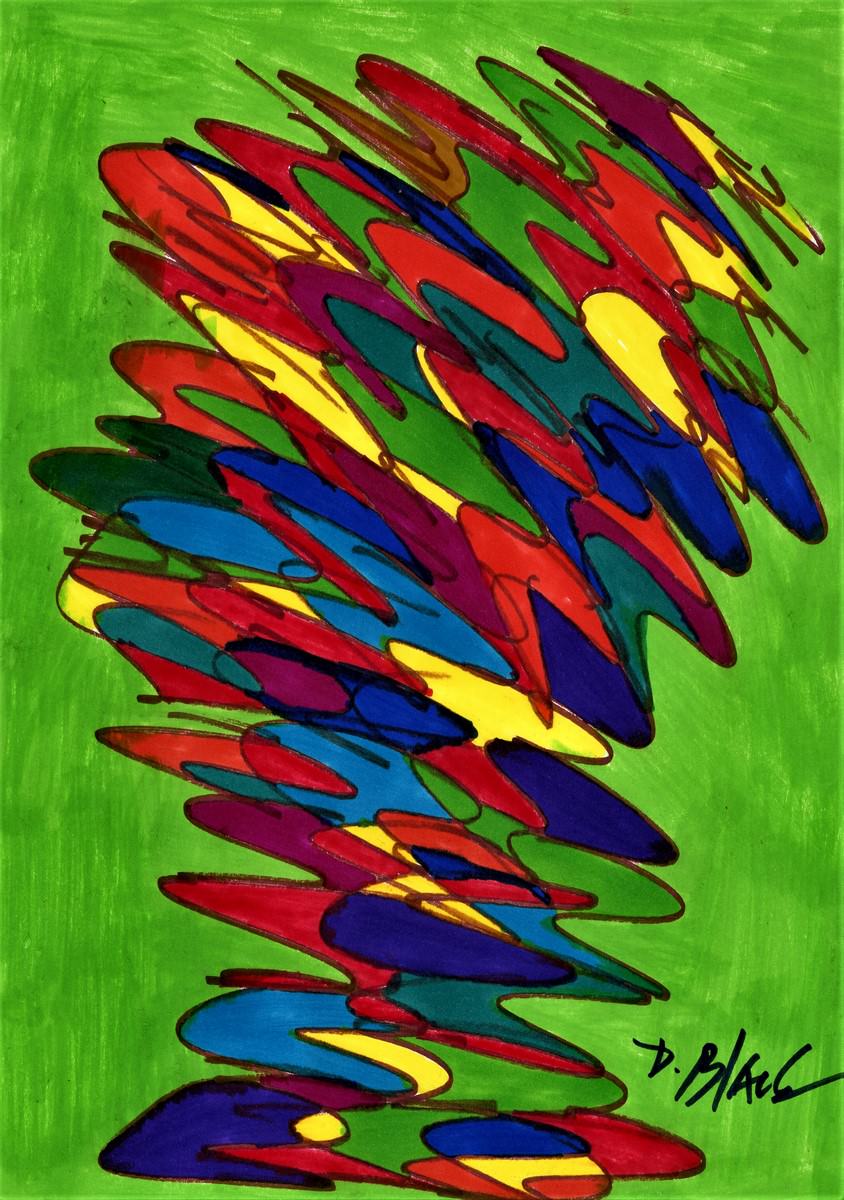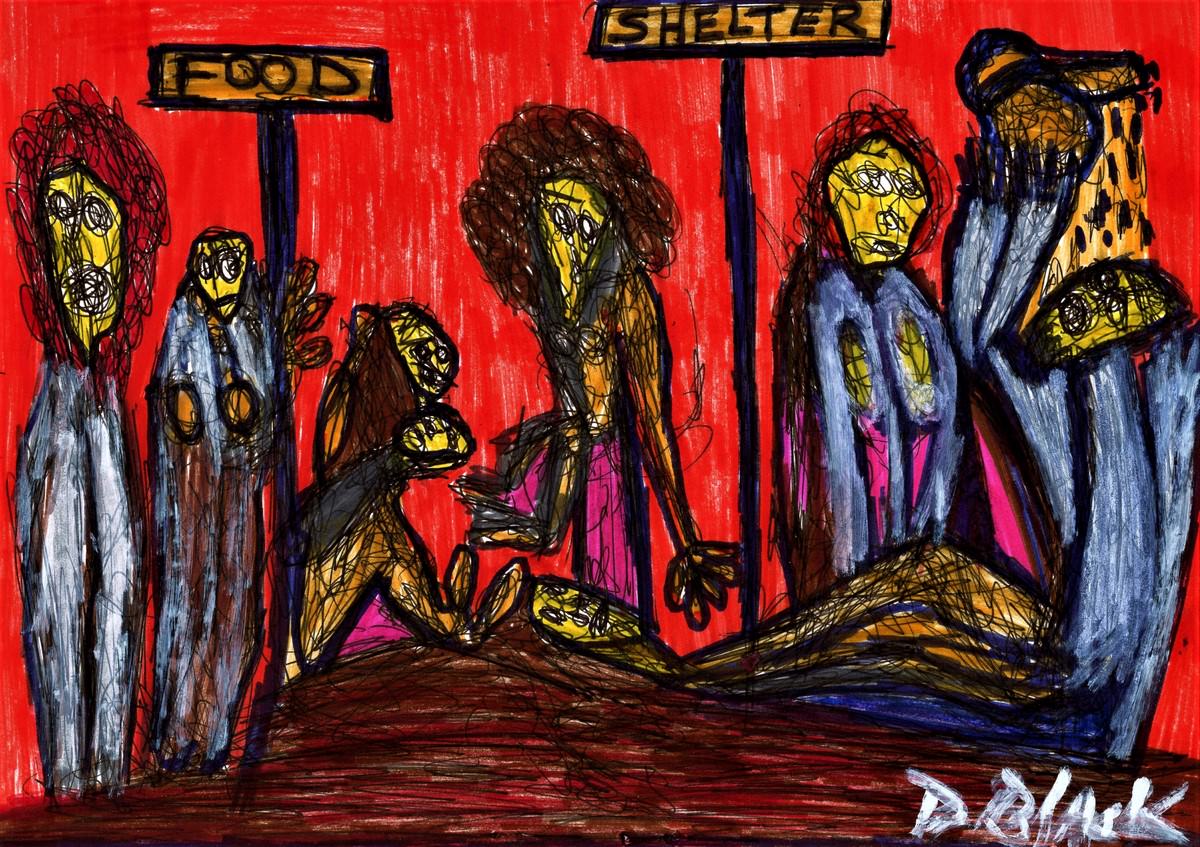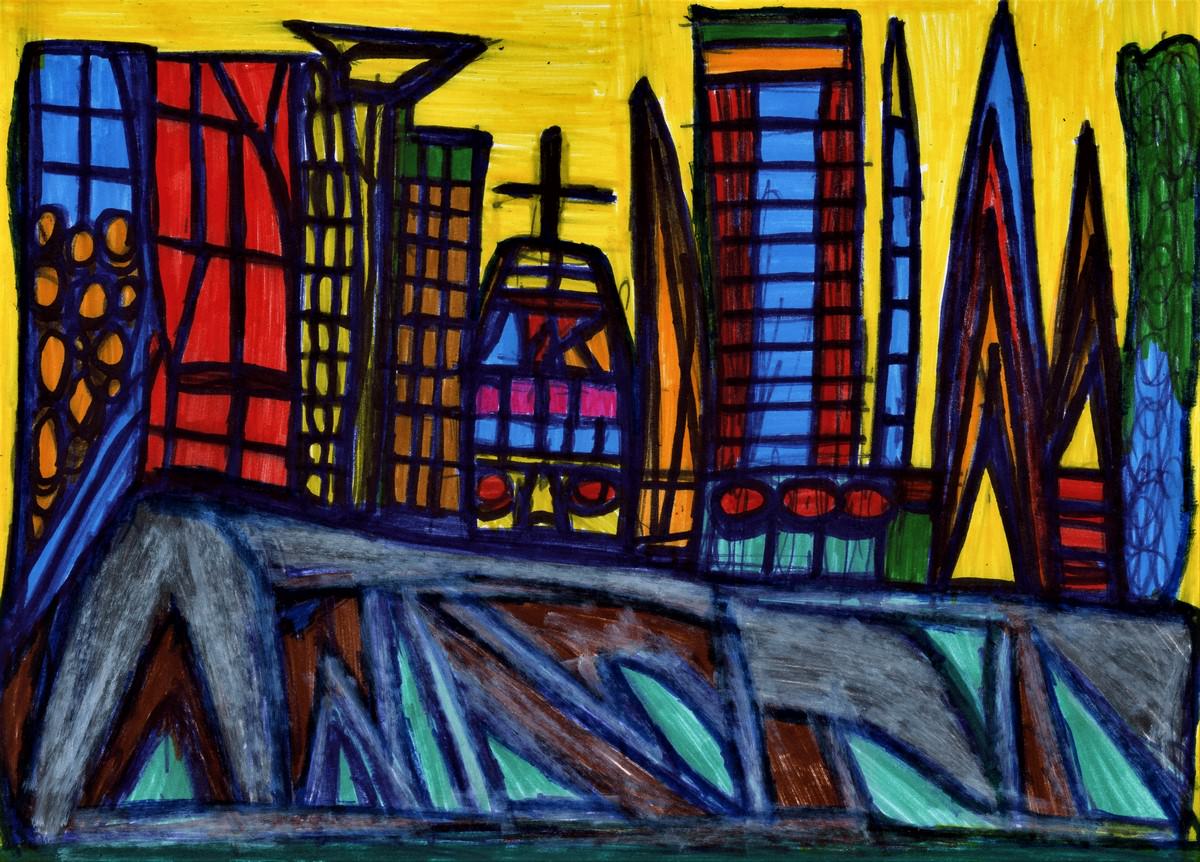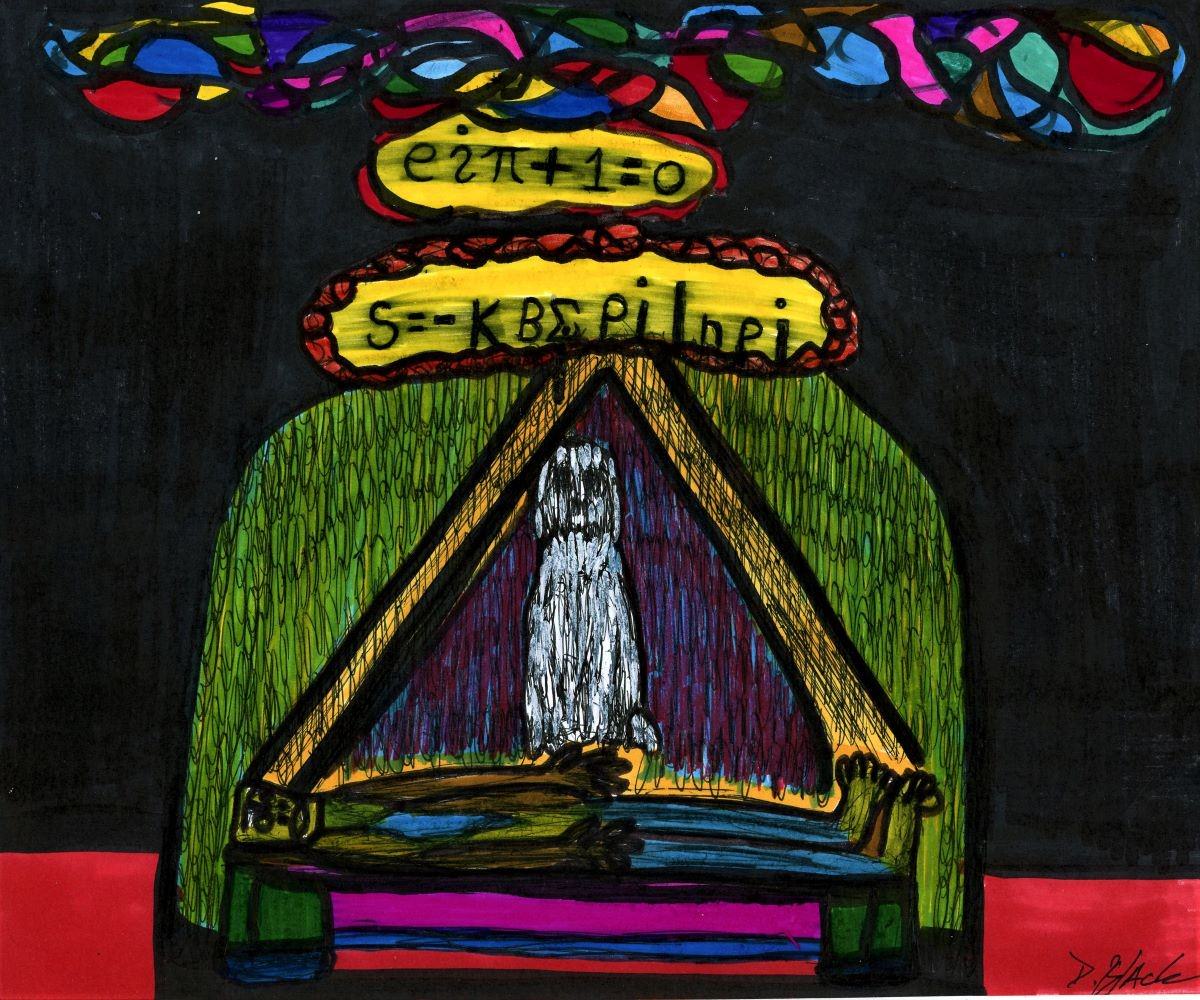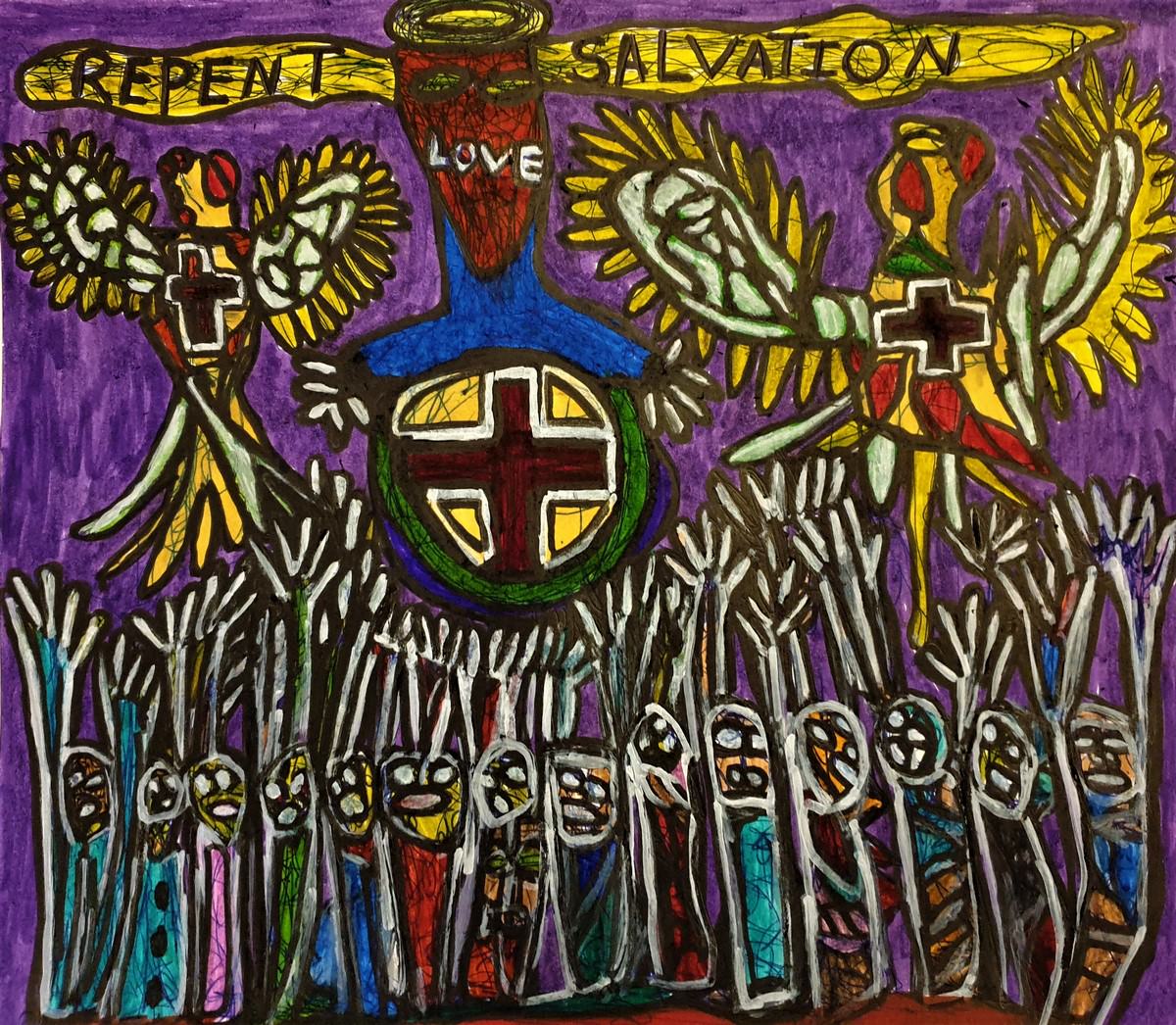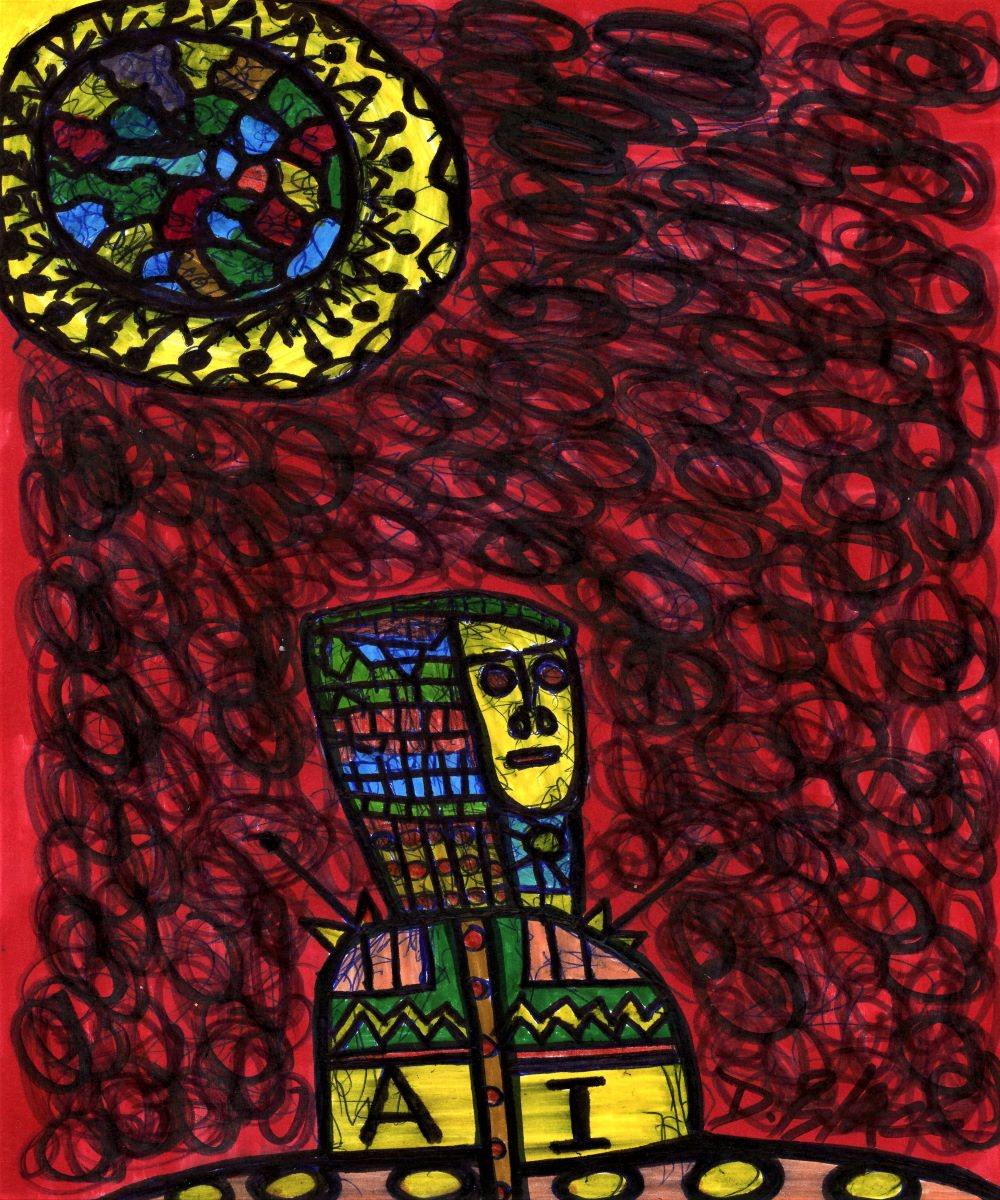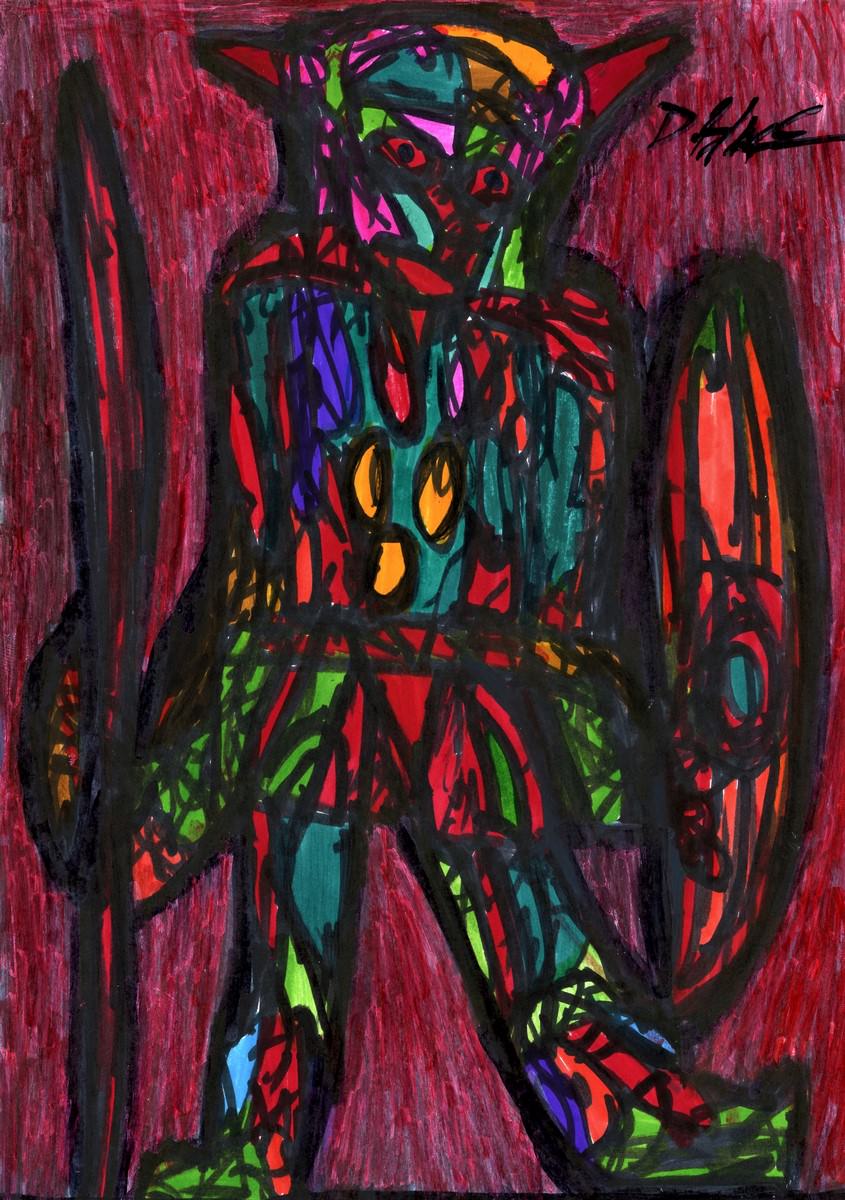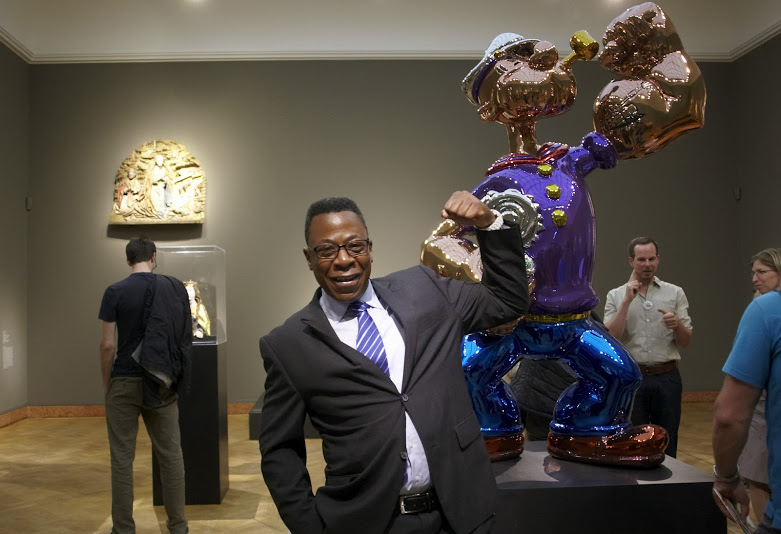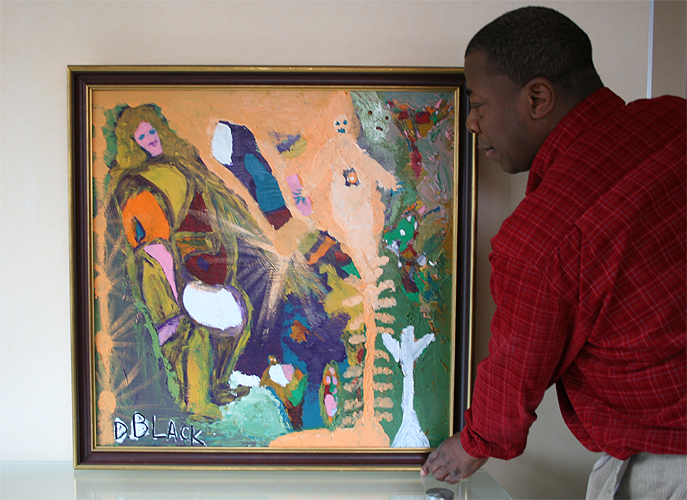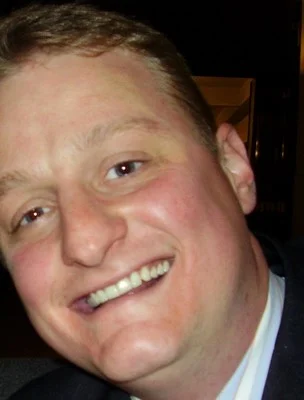
In Frankfurt, Germany, the artist Darrell Black, natural of New York, invites us to travel the paths of the unconscious through his works, seeking a better understanding of our inner universe.
Acting as a soldier in the armed forces, awoke again to the arts, after an encounter with memories of the past.
Check out the artist's full interview!
Interview
Darrell, tell us a little about yourself ...
My name is Darrell Urban Black, an American visual artist, self-taught Brooklyn born, in New York, who currently lives in Frankfurt, Germany.
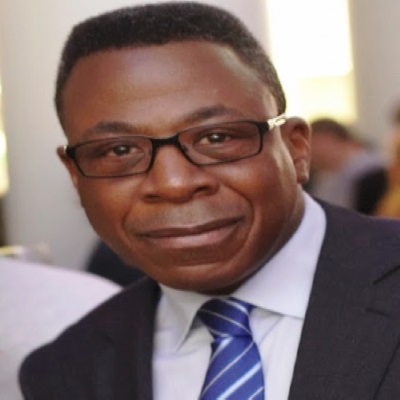
I work in a variety of formats including pen and ink drawings, acrylic paintings on canvas wood, mixed media objects and non-toxic hot glue that creates a three-dimensional effect on any surface that gives a sense of realism and presence to my art.
I refer to this artistic optical illusion as “Definism” in my opinion, Definism, depicts several differences in human nature, from the daily dramas of life to humanity's search for self-understanding. My works of art transport viewers from the stagnation of their daily reality to a visual interpretation of another reality. ”
When he woke up his desire to be an artist?
My interest in art started in childhood, while my parents had a miniature sculpture of the artist Rodin ‘The Thinker’ and abstract paintings by various artists on the wall. At the time, I was never really interested in that, but what I loved was space and everything that had to do with science. I created as a child, a spaceship including futuristic worlds and cities using any and all household items I could find: utensils, clothes pins and tools. Anything I could find to fuel my fantasy, this was my first introduction to art without realizing, but my main focus has always been on science.
What kind of art do you like best?
Artists Chagall and Klee are definitely on my chart of Great Artists that I admire, but the creatives that most inspired and influenced me are Mark Rothko and Jean-Michel Basquiat, which in my opinion are the most daring and provocative artists of the 20th century. Basquiat, for example, had a poetic and very brave style that spoke of instinctive human behavior and Rothko, used pure colors to invoke emotion and meaning beyond human senses.
How he developed his style (techniques)?
My first creative works started on paper, using four primary colors – Blue, black, Red and green. It took me many years of practice and a lot of encouragement from friends and family before trying a more vibrant and varied palette. I also started experimenting with different materials – creating works of art in wood, using acrylic or gluing ceramics on wood to form three-dimensional sculptures. The use of hot glue directly on the screen happened by chance when gluing ceramic pieces on wood; the ceramic separated from the wood by accident leaving very interesting designs, so I decided to continue creating images using a mixture of hot glue and acrylic on canvas and wood.
Cite if you had artistic influences in your works and which artists?
Three visual artists who continue to have an impact on me and my art are Mark Rothko, Jean Michel Basquiat e Jacob Lawrence. These artists, in my opinion, are the most daring and provocative of the 20th century. Basquiat, helped me to formulate the poetic narratives used in some of my works, Mark Rothko, encouraged me to be more daring, simplifying some of my images to pure colors and shapes. Jacob Lawrence, the vibrant art style of the American black experience has given me ideas and examples that I can imitate in my own images.
Do you have a family member or acquaintance who is an artist?
From what I know about my family, some are musicians and others work in the field of theater or television, but, as much as you are, I am the only visual artist.
Living from art is possible?
Not in the traditional sense of artists painting pictures and having interested art collectors available who want to buy. In today's supersaturated art market, many unknown and lesser-known visual artists need to balance a full-time job while creating artworks home, due to the lack of an available or accessible studio or art gallery representation. This non-existent support for new and future creatives has, in my opinion, smothered artistic originality, forcing many unknown artists to be less daring, just reproducing successful artists from the past to gain acclaim and financial support from the art world.
Ever thought about not acting with more art? Can you comment why?
when young, I spent a lot of my time drawing, accumulating a collection of more than 500 works on paper and, to my dismay, all got lost. I enlisted in the armed forces by transferring to Germany abroad. Ultimately, that's when my love for art was rekindled. This new military life abroad worried me about responsibilities, friendships and unknown European culture. The awakening of my artistic ability happened by accident, while fully engaged in my life as a soldier, I was rummaging through a box of photos and stumbled across ten images of my first works of art, with only a vague memory of what I created in the past. The photographs intrigued me, so I tried to draw again and after weeks of many failed attempts, recognizable images started to appear at that moment, I vowed never to give up my artistic practice again.
What skills are needed today for the artist?
Anyone can express themselves creatively and, in my opinion, to be an artist you just need passion. Everyone has the ability to express what they feel at any time, transferring that emotional expression to the canvas or paper that, on the other hand, invokes the reaction of the spectator audience.
What do you feel when you create or appreciate a work of art?
Creating or admiring any work of art is like two sides of the same coin, on the one hand you have the artist paralyzed with the challenge of taking the mental vision and putting it on canvas or paper in the precise sequence so as not to lose the idea that it becomes a difficult task for the artist. Seeing other artists' works of art presents similar challenges, since the public must find a way to understand the concept and the meaning presented by the artist. The titling of a work of art, in my opinion, it can also help the audience to resolve part of the creative mindset and give the viewer a starting point within the work of art that reveals the general message of the painting.
Your inspirations to create a work of art?
The influence on my art comes from traditional and non-traditional sources. I get inspired by everything and everyone who incorporates the mental or physical state of the person or object in my creations. For example, learn about Picasso's personality, researching all the tragedy and agony he caused to friends and family; the personal problems of artists like Rothko, Pollock and Basquiat; Winston Churchill's struggles to defeat the Nazis and win the war against tyranny; Manhattan project scientists starting from scratch to create the atomic bomb; Dr's determination. Frankenstein on creating a monster – all this fight, suffering and commitment to succeed against all odds gives me the incentive as an artist to create a new and innovative work.
Which art has impressed you the most so far?
I was inspired by many works by different artists, each painting invoking its own individual message, but if I could choose these are my favorite works: Basquiat: Untitled skull, Rothko: Number 14, Picasso’s: Guernica e Jacob Lawrence: The Swearing in.
You must always be creating or creating only at certain times?
I create whenever I feel like doing it, but many of my images were all started at night, working until dawn to finish the art. For many artists, including me, outbreaks of creativity can arise at any time and that is why I have several notebooks of drawing with me at all times, in case a creative idea happens to me, I can draw it immediately on paper.
[divider]
[divider]
The product of your work is unique or has a close or distant relationship to your previous work?
I would like to think that all my works of art so far have some air of uniqueness that forces the image to stand out on its own and, at the same time, look eerily similar to each other, being easily recognizable as “Definism” for the general public.
What are the challenges of art / artist in the current scenario?
Many challenges facing the future of art and the livelihood of artists are the costs of transportation and insurance to transport great works of art from one location to another. In addition, many artists have the necessary overhead to help keep their creativity moving. For example, the continuous purchase of art supplies and the payment of the studio's rented space begins to create an insurmountable burden for some artists and the price of creation becomes a prohibitive cost.
Social networks have helped you to spread your work?
Social networks have helped a lot in the dissemination, I think they are an indispensable part of the creative narrative.
How plastic arts can contribute to education and culture?
Sign up to receive Event News
and the Universe of Arts first!
Art has always been the search for the understanding of our unconscious that, over time, revealed a lot of information about the human psyche. The contribution of the fine arts in education will help society to have a better understanding of the inner universe that exists within all of us and with this new knowledge and purpose, creatives can help forge a visual interpretation that is culturally aware and directly reflects technological advances in today's society.
How you analyze the qualities of a work of art?
The unique qualities of a work of art are images that, at first sight, do not seem to fit any known artistic theme or art style of the past or present; the image seems to result from a radically creative idea that goes against traditional forms of creation. At first, this new creation is poorly understood, but at the same time that it invokes curiosity and time, its true meaning is gradually revealed, transforming the work of art into something innovative and ahead of its time.
What are the criteria for stipulating the value of a work of art?
The value of any work of art would depend on, in my opinion, of the universal visual language that the image conveys. For example, all levels of society can somehow identify with that work of art. "The viewer can see his world through the image portrayed on the screen." This social inclusion determines the value of any work of art.
Talk about your projects today ...
My most recent art projects are two digital art exhibitions held in Switzerland and an upcoming covid-19 work of art on display with a mask at the Copelouzos Family Art Museum, in Greece.
What's your advice for those just starting out?
Whoever decides to dedicate his life to the arts must persist and never give up! If you're not sure if a career in the arts is for you, ask yourself a question: “I love to create?”. And if the answer is a resounding yes! It's your way, then, for better or worse, stay with him.
If you want to leave a message ...
I never took myself seriously, I have always remained faithful to my art and believed in its ability to use visual cues to help express everyday social issues..
About your exhibitions, have any comments regarding, feelings…
Each exhibition in which I participated has its own theme and purpose: each place that brings together many people from all walks of life for the purpose of seeing art and for any visual artist, this is a chance to be seen and heard with the power of art by a very appreciative audience, for this opportunity I am forever grateful.
Could you comment on some artistic curiosity?
It would be interesting to look 50 years into the future to see the state of the arts and its impact on that particular generation.
How would you define your art in one line?
Darrell Black and the Art of Definism.
Social Media:
Facebook Profile: @Darrell Black
Facebook Fan Page: @Darrell Black
Instagram: @definismart
Website: darrell-black.pixels.com
.
…

